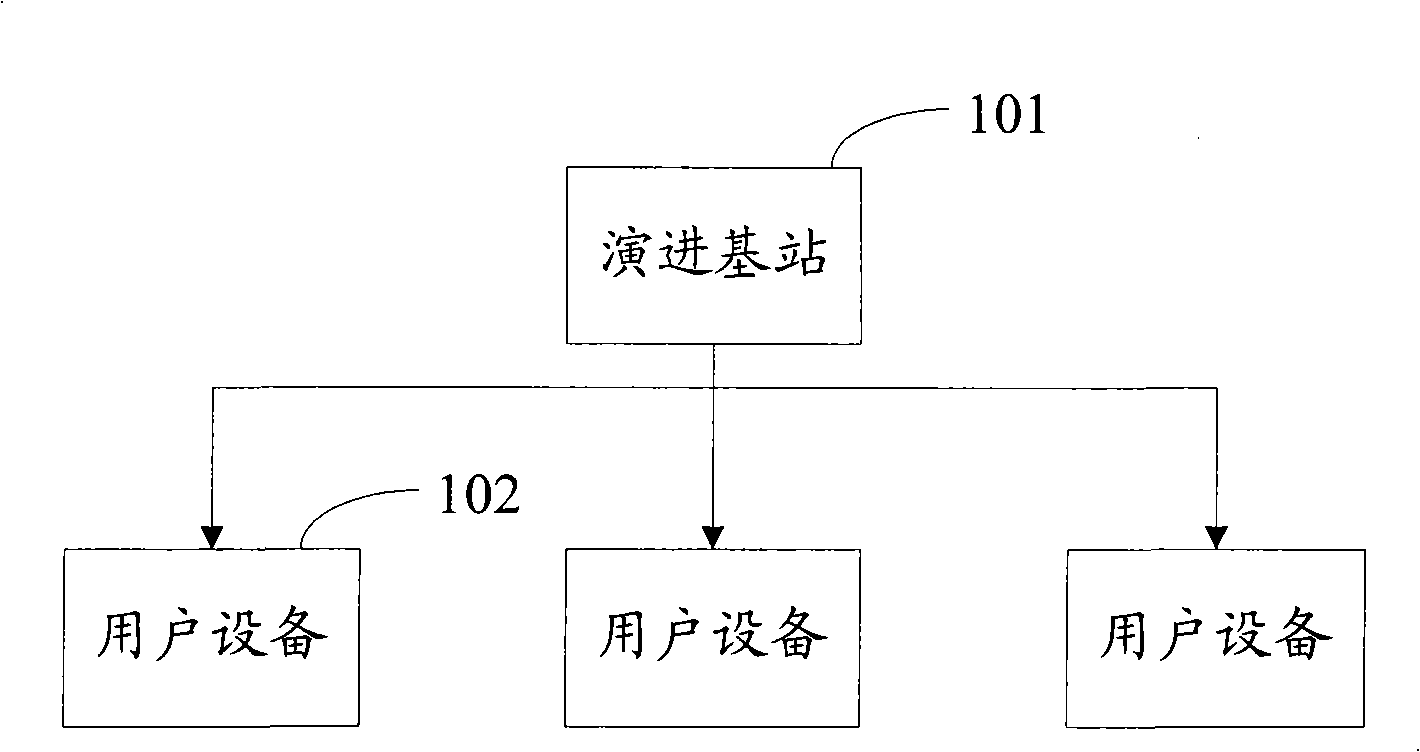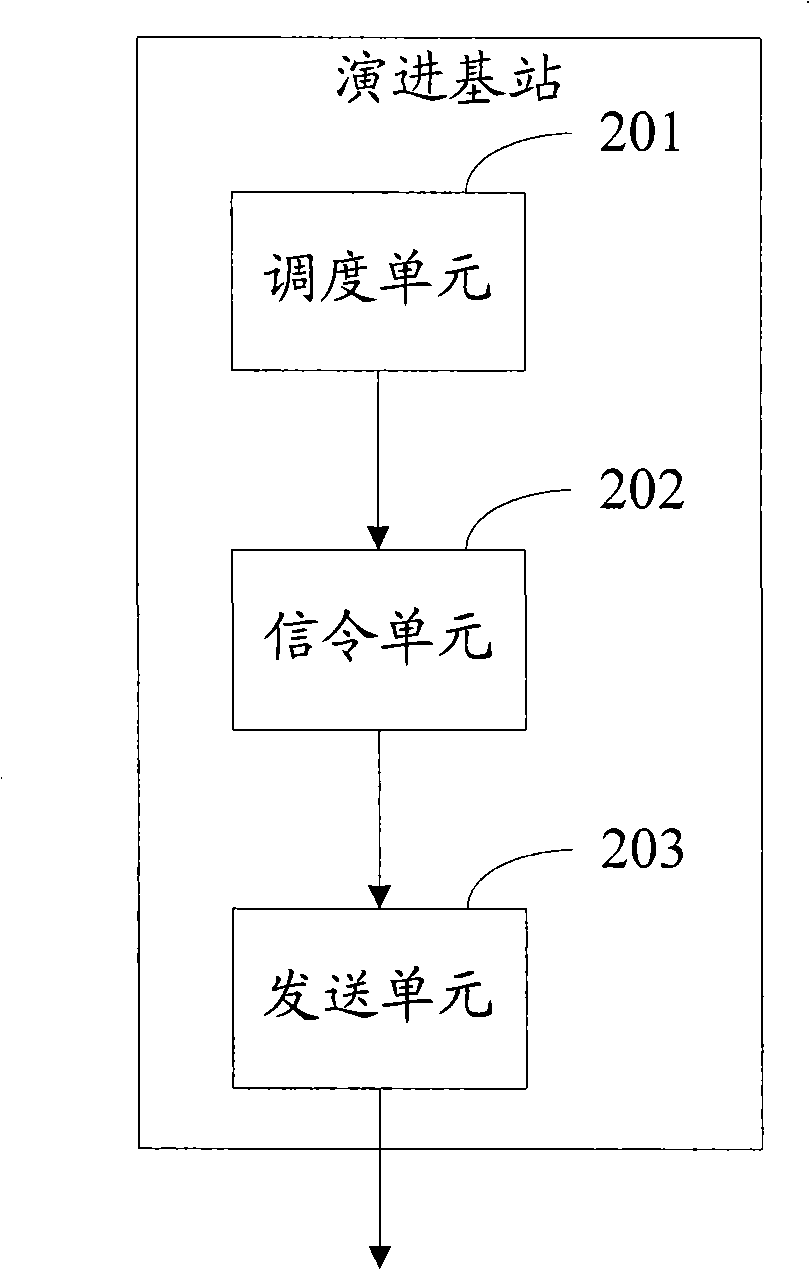Downlink resource indicating method and device
A resource indication and indication technology, applied in the direction of selection devices, radio transmission systems, electrical components, etc., can solve problems such as time-frequency resource allocation information transmitted by evolved base stations that are not clearly specified
- Summary
- Abstract
- Description
- Claims
- Application Information
AI Technical Summary
Problems solved by technology
Method used
Image
Examples
Embodiment 1
[0045] This embodiment mainly introduces a system for downlink resource indication and a device therein.
[0046] see figure 1 , the system in this embodiment includes an evolved base station 101 and a user equipment 102 .
[0047] The evolved base station 101 performs time-frequency resource scheduling according to the scheduling rule, and generates signaling for notifying each user equipment 102 of the time-frequency resource allocation. The front end of the signaling includes static resource indication information, and the back end includes dynamic resource indication information, or further This signaling is then broadcast in the system, including a sequence of user equipment identities. Further, according to the scheduling result of the time-frequency resource, the data is delivered to each user equipment 102 in the corresponding time-frequency resource.
[0048]The user equipment 102 receives and parses the signaling, learns the allocated time-frequency resources accor...
Embodiment 2
[0058] see Figure 4 , the main process of the downlink resource indication method in this embodiment is as follows:
[0059] Step 401: The evolved base station 101 performs time-frequency resource scheduling according to the scheduling rule. The scheduling of time-frequency resources can be based on resource block granularity, subband granularity, or a combination of the two granularities.
[0060] Step 402: The evolved base station 101 generates signaling according to the scheduling result, where the signaling includes static resource indication information and dynamic resource indication information, and may also include transmission mode and allocation duration. The evolved base station 101 broadcasts the signaling.
[0061] Step 403: The user equipment 102 receives the signaling through the broadcast channel.
[0062] Step 404: The user equipment 102 parses the signaling, obtains static resource indication information and dynamic resource indication information, and le...
Embodiment 3
[0064] In this embodiment, each dynamic resource indication information includes a user equipment identifier and a bitmap that only identifies time-frequency resources other than the time-frequency resources that are statically allocated. The specific process of the downlink resource indication method is as follows: Figure 5 shown:
[0065] Step 501: The evolved base station 101 performs time-frequency resource scheduling according to the scheduling rule, and uses resource blocks as the scheduling granularity. During network initialization configuration, which resource blocks are used for contiguous sub-carriers and which resource blocks are used for distributed sub-carriers are specified, and both the evolved base station 101 and the user equipment 102 are configured with this specification.
[0066] Step 502: The evolved base station 101 generates signaling according to the scheduling result. For the signaling format, please refer to Image 6 As shown, the static resource ...
PUM
 Login to View More
Login to View More Abstract
Description
Claims
Application Information
 Login to View More
Login to View More - R&D
- Intellectual Property
- Life Sciences
- Materials
- Tech Scout
- Unparalleled Data Quality
- Higher Quality Content
- 60% Fewer Hallucinations
Browse by: Latest US Patents, China's latest patents, Technical Efficacy Thesaurus, Application Domain, Technology Topic, Popular Technical Reports.
© 2025 PatSnap. All rights reserved.Legal|Privacy policy|Modern Slavery Act Transparency Statement|Sitemap|About US| Contact US: help@patsnap.com



